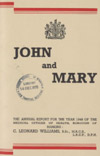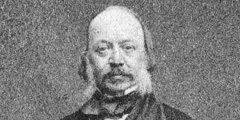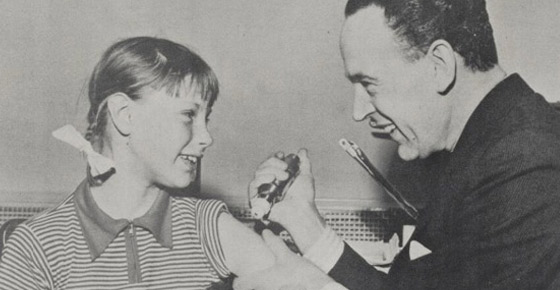London's Pulse: Medical Officer of Health reports 1848-1972
The health of the people
Hints from the Health Department. Leaflet from the archive of the Society of Medical Officers of Health. Credit: Wellcome Collection, London
The era of the Medical Officer Health saw the emergence of new ways of thinking about the connections between poverty, health and government.
On November 6 1849, John Simon, the newly appointed Medical Officer of Health (MOH) for the City of London, opened his first annual report:
Gentlemen, During the 52 weeks dating from October 1st 1848, to September 29th, 1849, there died of the population of the City of London 3,799 persons.
With this statement Simon was making history. For the first time the health of the nation's capital would be systematically recorded and published for anyone to see. The mortality rates of richer areas could be set alongside those of poorer ones; year by year, these were tied to issues of slum housing, water supply, sewerage and the uncontrolled activities of a myriad of London trades and industries.
And this was not simply knowledge for knowledge's sake. These problems signalled that parish-level responses and a laissez-faire government were inadequate when faced with the challenges of rapid industrialisation. This was the era of Parliamentary reform and the New Poor Law, a time when elites started being forced to accept that new solutions were needed to face the realities of an increasingly urbanised landscape.
Seen in this light, the MOH reports are but one part of a far bigger story, one in which new ways of thinking about the connections between poverty, health and government emerged. It is in the MOH reports that we can track the move away from contemporary journalistic descriptions of the poverty and chaos of the ever-expanding London. Building on the work of the doctor and statistician William Farr as much as on Edwin Chadwick's sanitary studies, the reports were a declaration that infectious diseases and the ill health of the poor might be measured, understood and brought under control through state intervention. This attitude paved the way not only for systematic medical investigation, but also for the rise of broad-scale sociological investigations such as Charles Booth's surveys of London.
The late 19th century saw the emergence of local government both as a response to the need to bring Britain's cities under control and as a means of engaging with an expanding, and unknown, electorate. MOHs - with a remit which very quickly covered everything from condemning slum housing and prosecuting owners of unsafe or unsanitary factories to infectious disease control, immunisation and inspection of foodstuffs - were at the heart of this project.
More than six decades after the creation of the National Health Service we perhaps take central control of health services for granted. However, before the mid-20th century Britain's emerging health system had been entirely based on local responses to local needs. So, despite the creation of first the Local Government Board and then the Ministry of Health to oversee the work of local authorities, these departments in fact had very little real power: legislation was permissive, and it was down to persistent MOHs or motivated councils to use the new powers. The reports often are revealing of the competing agendas within which MOHs were required to work: we don't just see the mechanical implementation of central government policy, but rather how local areas and individual MOHs chose to interpret, enact or indeed ignore new legislation.
Find out more
- The Public Health subject guide to archives in the Wellcome Library lists many sources, including the papers of the Society of Medical Officers of Health and the personal papers of some individual medical officers.
- Historical Hospital Admission Records Project (HHARP) provides online access to the admissions registers for several children’s hospitals in London and Glasgow. The registers provide details about the children, their diagnosis and results of treatment.
- The London Metropolitan Archives’s Care of the sick, dispossessed and destitute website provides an overview of their holdings on London’s health.
- The National Archives provide research guides to their holdings on:
- Stewart, J. ‘For a Healthy London’: the Socialist Medical Association and the London County Council in the 1930s. Med Hist, 1997; 41(4): 417-436.
- Stewart, J. The Finest Municipal Hospital Service in the World?: Contemporary Perceptions of the London County Council’s Hospital Provision, 1929-1939. Urban History, 2005; 32(2): 327-344. Available in the Wellcome Library.
Report highlight

John and Mary
In The Timeline
1842: Report on the Sanitary Condition of the Labouring Population of Great Britain


